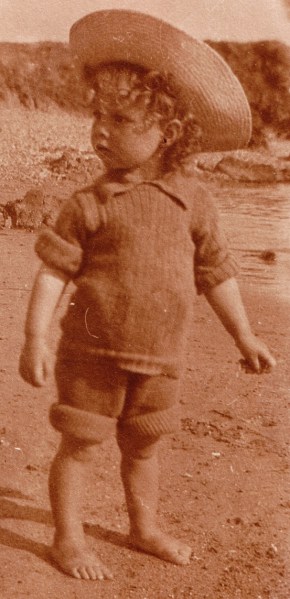Nowadays knitting, stitching, embroidery, and crochet are great ways to unwind and get crafty. But, back in the 18-1900s, needlework was an essential skill. Curator Henrietta reveals the importance of needlework in the Nettlefold’s lives by flicking through their photo archives.
Knitting and other forms of needlework are becoming increasingly popular as people rediscover the therapeutic benefits of working with yarn and thread. Yet, in earlier times, these were everyday skills, learnt by most girls and women. Magazines, such as ‘Weldon’s Practical Needlework’, provided patterns for people to follow.

Looking through photographs of the Nettlefold family, you soon come across images of needlework that are much like the patterns featured in Weldon’s. Arts and Crafts dressmakers loved smocking, and here is Margaret Nettlefold’s sister Mary wearing a stunning example.

The design looks very similar to the diamond stitch illustrated in Weldon’s.

Evelyn Nettlefold was photographed several times in this heavily smocked dress, with a much more complex pattern. We don’t know who made this dress, but Margaret Nettlefold was a skilled seamstress and embroiderer, so she may have worked on the children’s clothes herself.

In fact, Evelyn’s dress could have been a joint effort. As Weldon’s magazine says, “If a lady can succeed in satisfactorily working her own smocking, she can pass it over to her dressmaker to be made up, and the result will probably afford gratification”.
In a world without elastic or Lycra, knitting was the best way of creating something that needed to stretch. Our ancestors must have been used to itchy knitwear, even on the beach! Weldon’s provides a pattern for paddling pants, which must have been every bit as uncomfortable as they look.

Nettlefold photographs offer plenty of examples of this kind of beachwear in action.

Older children were also expected to wear knitted beachwear, and this could result in some very inelegant ensembles, such as this get-up worn by Nina Nettlefold.

Weldon’s offered a variety of knitting patterns designed for sporting activity, such as golf and cycling. One of the most intriguing patterns is this set of ladies’ cycling tights. Margaret was a very keen cyclist but, unfortunately, we don’t know whether she ever tried knitting something like this!

As Weldon’s says: “Knickerbockers are now largely worn, because of their comfort and warmth, and both these qualities are accentuated in a knitted garment…They are an excellent shape and being made in ribbed knitting are very elastic and fit neatly to the figure”. Have you turned your hand to needlework? Do you have a favourite piece of clothing that been made by hand?
 15°C
15°C


